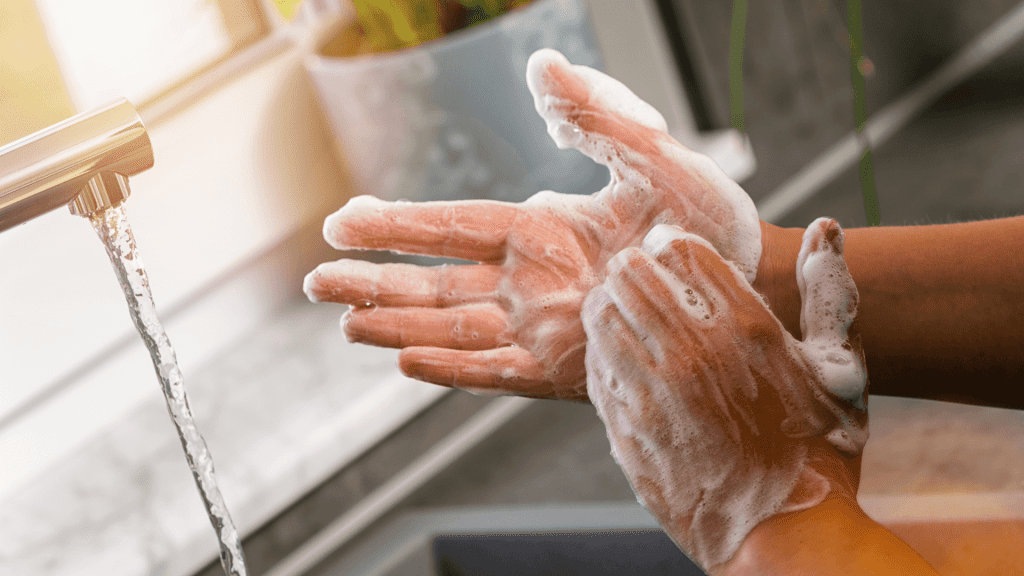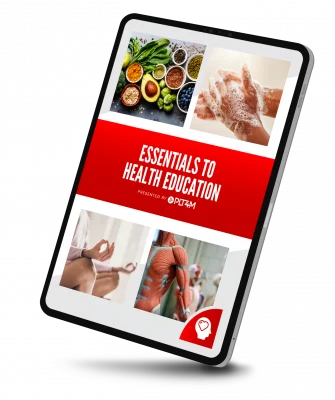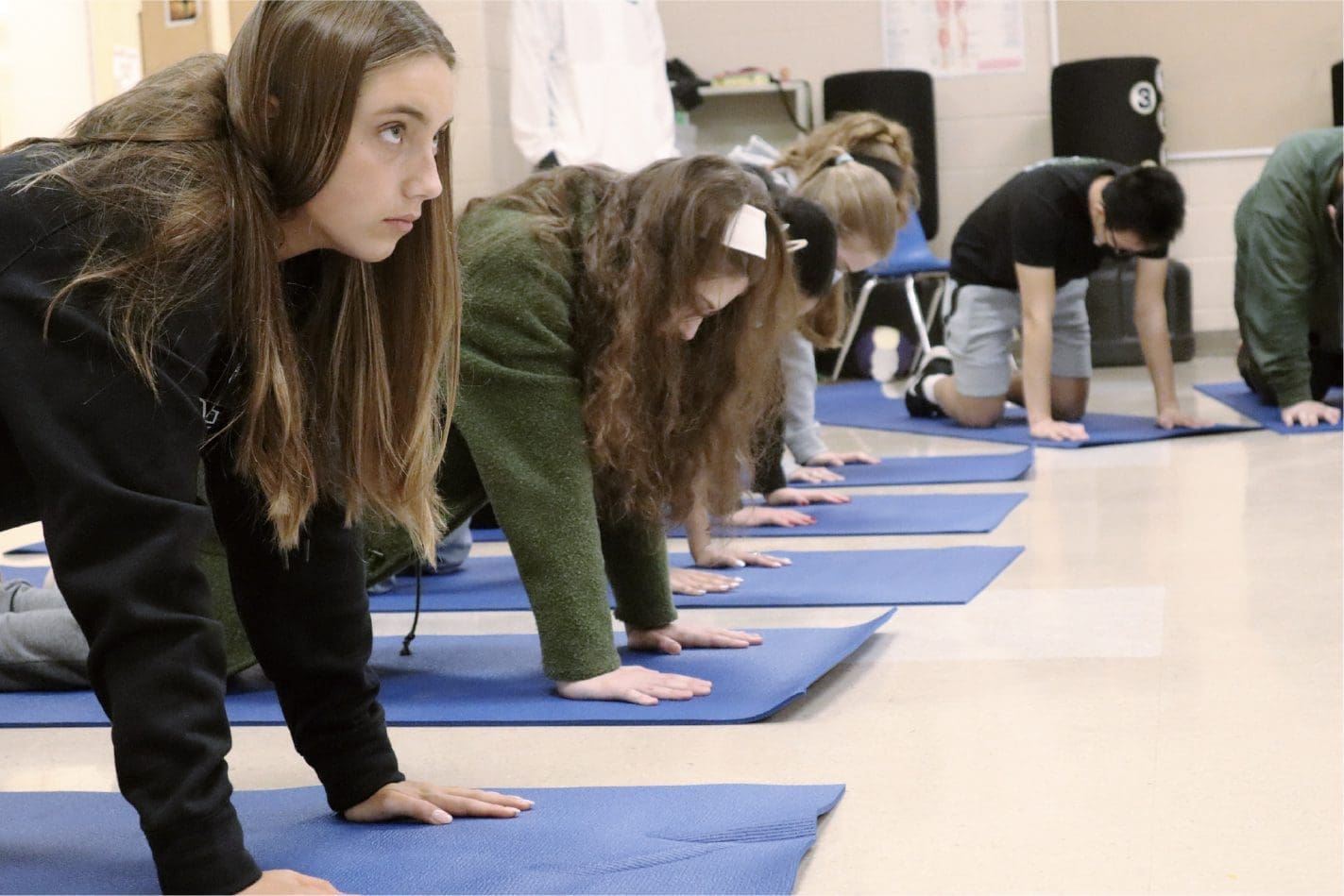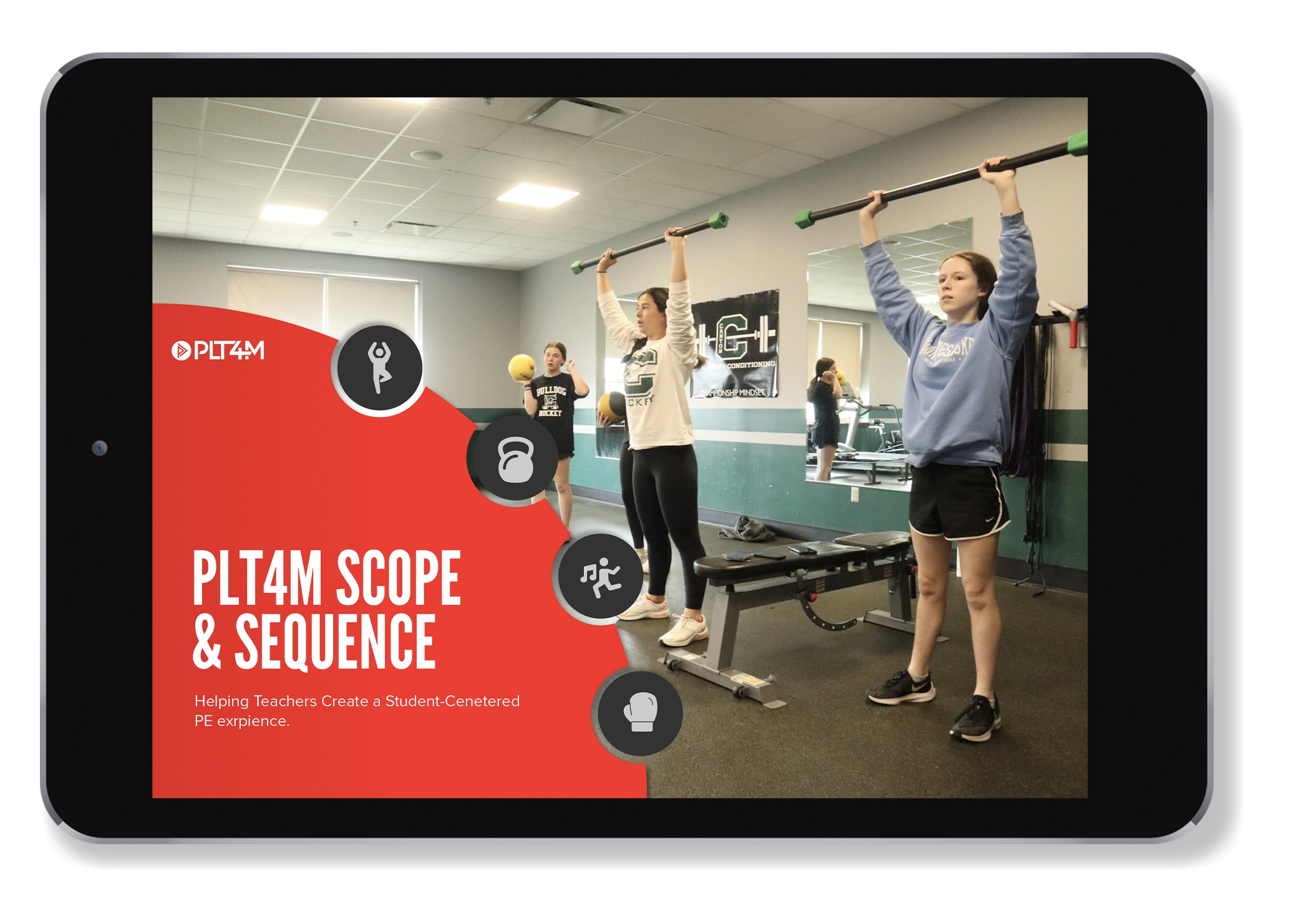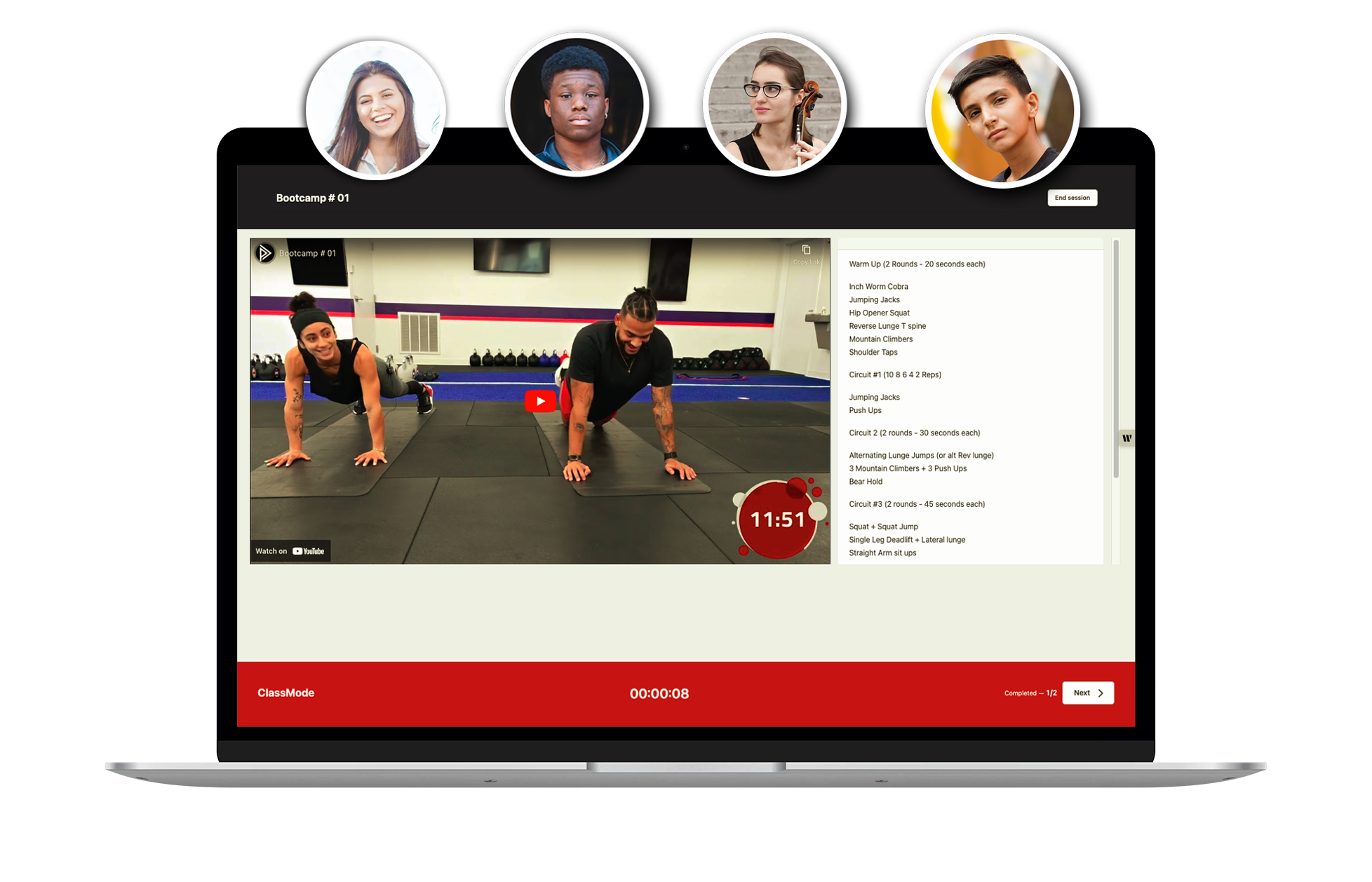The dreaded topic of personal hygiene has most students rolling their eyes and zoning out in class. But with simple and straightforward personal hygiene lesson plans, teachers can cover the basics of good hygiene habits and support students as they become young adults building their own personal hygiene plans. We break down the basics of personal hygiene lesson plans and provide 3 free lesson plans to sample.
Importance of Personal Hygiene Lesson Plans
Personal hygiene is the behaviors and steps we can take as individuals to maintain health and prevent disease for ourselves and the people around us. The primary goal of personal hygiene is to be healthy!
While the primary focus of personal hygiene is health, the impact on our social and personal lives cannot be ignored. Many of the steps to personal hygiene also help people in a world filled with social interactions. By taking regular steps to support personal hygiene, we can also improve things like the smell of our breath and body odor.
But we shouldn’t assume that good personal hygiene habits come naturally to students. Like anything other topic, hygiene practices are best served when taught through the lens of what, why, when, and how. Here lies the importance of personal hygiene lesson plans!
Challenges of Personal Hygiene Lesson Plans
Personal hygiene concepts can be taught at almost any age and grade level. Young children learn the fundamental importance of things like washing their hands and brushing their teeth at an early age.
However, a bulk of the personal hygiene lesson plans are taught at the middle school level. As middle school students start to hit puberty and experience bodily changes, there lies an opportunity (or more of a necessity) to cover the basic concepts of personal hygiene.
And that means talking to middle school students about things that will likely garner a large swath of eye roles. While some teachers feel confident introducing personal hygiene activities and lessons to students, many look for an alternative route for students to learn personal hygiene topics.
But most of the resources for personal hygiene are anything but engaging and inspiring. Typically, teachers have the following options to choose from:
Option 1: Outdated stock videos. Picture 1990’s grainy videos showing “real people” doing things for a daily hygiene routine.
Option 2: Cartoon videos. To avoid the awkwardness of real humans on camera, many personal hygiene lesson plans opt for a cartoon version in the hopes of making it more engaging for students.
While both have merits and drawbacks, there never seems to be a perfect solution for teaching students about good hygiene.
Want To See More
Schedule a 15-Minute demo to explore the full PLT4M catalog of programs!

3 Free Personal Hygiene Lesson Plans
One way or another, personal hygiene lesson plans need to be covered by most school districts across the country. PLT4M has developed a painless approach to teaching good hygiene practices via PE lesson plans. These lessons are great for middle or high school students, but we recommend introducing these by the middle school level!
PLT4M’s personal hygiene unit covers the following topics:
What Is Personal Hygiene
Hand Washing
Oral Hygiene
Showering/Bathing
Facial Hygiene
Deodorant
Wearing Clean Clothes
Nails
Menstrual Hygiene
Daily Personal Hygiene Routine Reflection
Each lesson contains the topics’ what, why, when, and how via a written lesson. Each written lesson is complemented with a short, honest, and sometimes silly video. Finally, each lesson concludes with 3 reflection questions to check for students’ understanding. Below are 3 free personal hygiene lesson plan samples from PLT4M’s Personal Hygiene Unit.
Lesson 1: What Is Personal Hygiene?
Written Lesson
Welcome to an exploration of personal hygiene! Before we dive into the specific topics and lessons of personal hygiene, let’s begin getting onto the same page about what personal hygiene is, how it impacts our health and daily life, and how it relates to us as students and young adults.
What is Personal Hygiene?
Hygiene is the conditions or practices conducive to maintaining health and preventing disease, especially through cleanliness.
And we can take hygiene and apply it to food, environment, home, and more. For example, food hygiene would be how we prepare, cook, and store food to prevent food from going bad and spreading illness. Or home hygiene is how we could disinfect and clean parts of our house to prevent bacteria and germs from building up.
With these examples, we can begin to understand what we mean by personal hygiene. Personal hygiene is the behaviors and steps that we can take as individuals to maintain health and prevent disease for ourselves, and the people around us. The primary goal of personal hygiene is to be healthy!
Personal hygiene refers to things like washing and cleaning your hands, mouth, body, and more. We will explore all the different elements of personal hygiene in future lessons!
Why is Personal Hygiene Important?
Personal hygiene is important because it can keep us healthy and prevent disease. Without personal hygiene, we put ourselves at risk of different health issues both short and long term (and small and big problems).
For example, if a person doesn’t regularly shower/bath, they can increase the risk of different skin irritations or infections. And while a rash might not seem like a major life-altering problem, rather just an annoyance, we can still reduce the risk through personal hygiene.
Without proper regular personal hygiene, we also open ourselves up to bigger issues. For example, when it comes to oral hygiene, people who don’t regularly brush and floss can have major dental issues that are both costly and painful.
While these are just two examples, we can begin to understand the importance of personal hygiene for our health both short and long term.
Personal Hygiene and Social Interactions
While the primary focus of personal hygiene is how it relates to our health, the role of personal hygiene in our social and personal lives are deeply connected.
Many of the steps to personal hygiene also help support people in a world filled with social interactions. By taking regular steps to support personal hygiene, we can also improve the smell of our breath, body odor, and more. While good personal hygiene doesn’t raise many eyebrows, the opposite does. People who fail to take care of personal hygiene can find themselves in difficult and uncomfortable social situations, causing those around them to be uncomfortable.
Long story short, as we become young adults in school, work, and social settings, taking care of our personal hygiene is important to functioning within society. By tackling bad breath, body odor, and more, we are putting ourselves in a position to operate and exist within society whether it is school, social settings, home life, and more.
Personal Hygiene and The World You Live In
These lessons are meant to serve as a general understanding of personal hygiene. There is no one size fits all solution to taking care of yourself and your hygiene.
Personal hygiene in a lot of ways is a chance to explore your interests and opportunity to choose your own adventure. From different types of soaps, toothpastes, deodorants, hair and nail styles and more, personal hygiene is a chance for self expression.
But, personal hygiene is deeply connected to family, money, resources, culture, and other factors that might not always be in your control. It is important to learn about the basics of personal hygiene and then apply them to your life. For example, you might not get a say or choice in the type of soap, detergent, or other personal hygiene products in your house. Or because of your schedule or situation, your personal hygiene plan might be different from your peers. All of this is okay!
Lastly, personal hygiene is for anyone and everyone. Notice that throughout these lessons we don’t talk about things like race, ethnicity, or gender. Yes, these things might dictate our preferences on personal hygiene, but can all come to the topic of personal hygiene knowing we are all humans that have basic needs for health and hygiene.
That is why we keep this high level. If you have more specific questions, talk to someone that you know and trust to help further explore personal hygiene and how it relates to you as an individual! For example, taking care of your hair and scalp is important for everyone, but it may look very different depending on what type of hair you have. Seeking out salons, barber shops, or mentors could be helpful in understanding how to take care of your hair.
In conclusion, learning about personal hygiene gives us all an opportunity to learn about the basics of health and wellness, while also finding the right fit for our personal lives.
Let’s Be Serious…Personal Hygiene Is Kind Of Funny!
As we start to dive into personal hygiene, let’s all prepare ourselves to read and watch things that might seem sort of silly or funny. For example, when we talk about showering, we have a dedicated paragraph on our butts. BUT, while personal hygiene might seem a little funny or awkward to learn and talk about, remember that these elements of personal hygiene support our health, wellness, and social interactions on a daily basis. So let’s do our best to take a SERIOUS look at what might feel like a silly subject.
And you might be asking, I brush my teeth every day so why do I have to learn about it? Even if things like washing your hands or brushing your teeth seem like a no-brainer, we are still going to talk about them so we can all get on the same page about personal hygiene 101. Because as you grow up from young adults into the “real world” it is essential to have a basic understanding of why and how to take care of your bodies. So, let’s dive in!
Chapter Questions
1) What is the definition of hygiene?
2) Give one example of how health promoting personal hygiene supports our social interactions?
3) What are some ways that you currently take care of your personal hygiene?
Get Our FREE Health E-Book!
The Essentials to Health Education
Get five free health lessons, pulled directly from our Health Curriculum. With lessons on Nutrition, Digital Citizenship, Personal Hygiene and more, there are tons of valuable insights!
Washing Your Hands
Written Lessons
Handwashing is a simple yet highly effective practice that plays a crucial role in maintaining good health. Our hands are constantly in contact with various surfaces and objects, accumulating germs and bacteria throughout the day. It is a habit we learn from an early age, and while it may seem like a routine task, the impact it has on preventing the spread of infections and diseases is crucial. In this article, we will explore why washing hands is important, the science behind it, and the proper techniques to ensure effective hand hygiene.
All The Things We Touch
People touch a wide variety of surfaces and objects throughout the day, often without realizing the potential for germ transmission. Commonly touched items include doorknobs, light switches, elevator buttons, keyboards, smartphones, tablets, pens, pencils, and other school supplies.
In public spaces, individuals may come into contact with handrails, shopping carts, door knobs, and restroom fixtures.
At home, commonly touched items include remote controls, kitchen appliances, faucets, and light fixtures. Personal items like money, wallets, keys, and purses also frequently pass through hands.
And this is not an exhaustive list of things we touch! The diversity of surfaces encountered underscores the importance of regular hand washing to minimize the risk of spreading germs and prevent the transmission of infectious diseases.
How Germs Spread:
The CDC says thata few common times germs can spread from person-to-person or from surfaces-to-people include when you:
- Touch your eyes, nose, and mouth with unwashed hands
- Prepare or eat food and drinks with unwashed hands
- Touch surfaces or objects that have germs on them
- Blow your nose, cough, or sneeze into hands and then touch other people’s hands or common objects
Therefore, the CDC recommends washing hands during key times in the day to help minimize the threat of spreading germs:
- Before, during, and after preparing food
- Before and after eating food
- Before and after caring for someone at home who is sick with vomiting or diarrhea
- Before and after treating a cut or wound
- After using the toilet
- After changing diapers or cleaning up a child who has used the toilet
- After blowing your nose, coughing, or sneezing
- After touching an animal, animal feed, or animal waste
- After handling pet food or pet treats
- After touching garbage
5 Steps To Washing Your Hands The Right Way
Washing your hands is an easy and effective way to prevent the spread of germs to keep you and the people around you healthy! And while you might have “washed your hands” by turning on the faucet and letting your hands just get wet, the CDC outlines 5 key steps to washing your hands the right way every time:
Follow these five steps every time.
- Wet your hands with clean, running water (warm or cold), turn off the tap, and apply soap.
- Lather your hands by rubbing them together with the soap. Lather the backs of your hands, between your fingers, and under your nails.
- Scrub your hands for at least 20 seconds. Need a timer? Hum the “Happy Birthday” song from beginning to end twice.
- Rinse your hands well under clean, running water.
- Dry your hands using a clean towel or air dry them.
And while washing your hands with soap and water is the best way to get rid of germs, if this isn’t possible, hand sanitizer can be a helpful alternative. While hand sanitizers don’t get rid of all types of germs, hand sanitizer with at least 60% alcohol can help to reduce the risk of germ transmission.
Conclusion
In the battle against infectious diseases, handwashing stands out as a powerful and accessible tool to good hygiene and healthy living. By understanding the importance of hand hygiene and adopting proper handwashing techniques, individuals can contribute to their own well-being and the health of their communities. As a simple yet effective practice, regular hand washing serves as a cornerstone in the foundation of public health and disease prevention.
Helpful Links:
– Hand Hygiene – Keeping Your Hands Clean
– Frequent Questions About Hand Hygiene
Chapter Questions
1) List three common times that germs can be spread through hands:
2) How long should you scrub your hands for when washing your hands?
3) True or False – Hand sanitizer is an equally effective alternative to washing your hands with soap and water?
Oral Hygiene
Written Lesson
Oral hygiene, as defined by the Cleveland Clinic, is the practice of keeping your mouth clean and disease free. It is an essential aspect of overall health and personal hygiene that often goes beyond the simple act of brushing our teeth. It encompasses a range of habits and practices aimed at maintaining the health of the mouth and preventing various dental issues.
Understanding Oral Health
The CDC states that oral health refers to the health of teeth, gums, tongue and the entire oral-facial system that allows us to do things like speak, smile, and chew. So as you can see, it is about more than just brushing your teeth! Instead, oral hygiene refers to the practice of keeping the entire mouth clean and healthy to prevent dental problems such as cavities (tooth decay), gum (periodontal) disease, bad breath, and more.
Moreover, good oral hygiene and health doesn’t just support your mouth. In fact, oral health is also linked to whole-body health.
“For example, if an infection is present in your mouth, your bloodstream can carry the bacteria to other areas of your body, leading to other health concerns like heart disease and stroke. Keeping your teeth and gums healthy is an important part of long-lasting overall health.” – Cleveland Clinic
The Components of Oral Hygiene
We can take care of our oral hygiene in a variety of ways. From brushing, flossing, and mouthwash at home to regularly visiting the dentist, oral hygiene is a long-term commitment.
1) Brushing:
The foundation of good oral hygiene begins with regular and proper brushing. Dentists recommend brushing your teeth at least twice a day using fluoride or hydroxyapatite toothpaste (More on this here). Use a soft-bristled toothbrush and employ gentle, circular motions to clean all surfaces of your teeth. Don’t forget to brush your tongue or even use a tongue scraper (more on this here) to eliminate bacteria that can cause bad breath. When you brush, place your toothbrush at a 45-degree angle toward your gums. This helps sweep away plaque and bacteria at the gum line. Be sure to brush all teeth surfaces, including the backs and sides. Set a timer for two minutes and get brushing!
2) Flossing:
Flossing is crucial for removing plaque and food particles from between teeth and below the gumline, where toothbrushes may not reach. Make flossing a daily habit to maintain optimal oral health.
3) Mouthwash:
Incorporating an antimicrobial or fluoride mouthwash into your routine can help reduce bacteria, strengthen enamel, and freshen breath. However, it should not replace brushing and flossing but instead complement them.
4) Professional Dental Care:
In addition to our at-home oral hygiene routine, regular visits to the dentist are an integral part of oral hygiene. Dental professionals can identify early signs of dental issues, perform thorough cleanings, and offer guidance on personalized care. It is recommended to schedule dental check-ups at least twice a year to maintain optimal oral health.
Healthy Lifestyle Choices To Support Oral Hygiene
1) Balanced Diet:
A nutritious diet not only benefits your overall health but also plays a vital role in maintaining oral hygiene. Limit sugary and acidic foods, as they can contribute to tooth decay. Instead, focus on a diet rich in fruits, vegetables, lean proteins, and dairy.
2) Hydration:
Drinking plenty of water is not only beneficial for your overall health but also for your oral health. Water helps wash away food particles, bacteria, and acids that can contribute to tooth decay.
3) Avoid Tobacco:
Tobacco use is a significant risk factor for gum disease, oral cancers, and other dental issues. Quitting or avoiding tobacco products is crucial for maintaining good oral health.
4) Protect Your Teeth:
If you engage in contact sports or grind your teeth at night, consider using a mouthguard to protect your teeth from potential damage.
Conclusion:
Oral hygiene is a multifaceted approach to maintaining the health of your teeth and gums. By incorporating daily habits, seeking professional dental care, and making healthy lifestyle choices, you can achieve and preserve your smile while contributing to your overall well-being. Prioritizing oral hygiene today can lead to a lifetime of healthy smiles and improved quality of life.
Helpful Links:
Chapter Questions
1) Define oral hygiene in a sentence or two.
2) Provide an example of how oral hygiene impacts overall health.
3) What are three ways you can practice oral hygiene at home?
Key Takeaways On Personal Hygiene Lessons
Covering the basics of personal hygiene doesn’t have to be complicated! Students can explore the key elements of a daily hygiene routine like brushing teeth, hand washing, showing, using deodorant and so much more through basic written and video lesson materials.
Want to check out the full unit of personal hygiene lesson plans and more from PLT4M? Reach out to schedule a free consultation to unlock lots of awesome materials for middle school and high school students!
FAQ
What other health education topics does PLT4M have?
Check out more health education lesson plans from PLT4M here! Different topics include:
Ready to WOW your Admins?
Schedule a 15-Minute demo to learn how PE teachers are ushering in a new age of Physical Education with Wellness and Technology!

